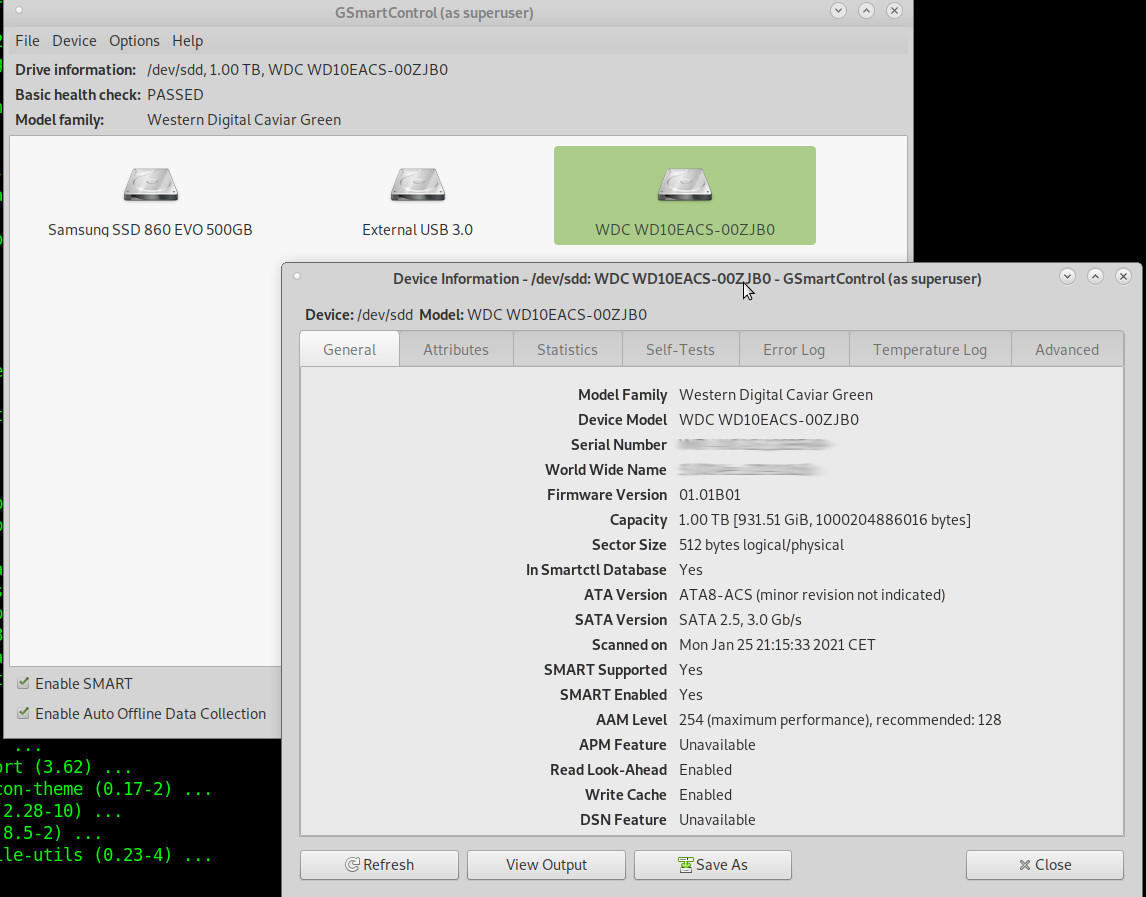
Options Options for selecting a mode are: This is an 'everything else' mode that supports operations on active arrays, operations on component devices such as erasing old superblocks, andĪuto-detect This mode does not act on a specific device or array, but rather it requests the Linux Kernel to activate any auto-detected arrays. This is for doing things to specific components of an array such as adding new spares and removing faulty devices. If a CONTAINER is passed to mdadm in this mode, then any arrays within that container will be assembled and started. fail flag is passed in we will remove the device from any active array instead of adding it. As each device is detected, mdadm has a chance to include it in some array as appropriate. If the addition of the device makes the array runnable, the array will be started.

Incremental Assembly Add a single device to an appropriate array. The chunk size and layout for RAID 0,4,5,6, as well as adding or removing a write-intent bitmap. Currently supported growth options including changing the active size of component devicesĪnd changing the number of active devices in Linear and RAID levels 0/1/4/5/6, changing the RAID level between 0, 1, 5, and 6, and between 0 and 10, changing Grow (or shrink) an array, or otherwise reshape it in some way. RAID0 or Linear never have missing, spare, or failed drives, so there is nothing to monitor. This is only meaningful for RAID1, 4, 5, 6, 10 or multipath arrays, as only these have There is no need to wait for the initial resync to finish.įollow or Monitor Monitor one or more md devices and act on any state changes. The array can be used as soon as it has been created. both sides of a mirror contain the same data) but the content of theĭevice is left otherwise untouched. A 'resync' process is started to make sure that the array is consistent (e.g. Appropriate metadata is written to each device, and then the array comprising those devices isĪctivated. Should only be used together with a complete understanding of what you are doing.Ĭreate a new array with per-device metadata (superblocks). It also cannot perform any checks that appropriate components have been requested. For these sorts of arrays, mdadm cannot differentiate between initial creationĪnd subsequent assembly of an array.

That the components do form a bona fide array, and can, on request, fiddle superblock information so as to assemble a faulty array.īuild an array that doesn't have per-device metadata (superblocks). Components can be explicitly given or can be searched for. Mdadm has several major modes of operation:Īssemble Assemble the components of a previously created array into an active array. Other normal arrays (RAID1 etc) can be created inside the container. So when mdadm creates a CONTAINERĭevice, the device just represents the metadata. With a CONTAINER, there is one set of metadata that describes all of the arrays in the container. Over the first half of each device, and a RAID0 over the second half. For example, two devices in a 5-device set might form a RAID1 using the whole devices. The set of devices may contain a number of different RAID arrays each utilising some (or all) of the blocks from a This is similar to the set of devicesĬonnected to a hardware RAID controller. A CONTAINER is a collection of devices that are managed as a set. It provides a layer over a true device that can be used to inject faults.ĬONTAINER is different again. Use the Device Mapper based multipath-tools instead.įAULTY is also not true RAID, and it only involves one device. Installations should not use md/multipath as it is not well supported and has no ongoing development.
#RAID MONITOR LINUX SOFTWARE#
MULTIPATH is not a Software RAID mechanism, but does involve multiple devices: each device is a path to one common physical storage device.

RAID10, MULTIPATH, FAULTY, and CONTAINER. Linux Software RAID devices are implemented through the md (Multiple Devices) device driver.Ĭurrently, Linux supports LINEAR md devices, RAID0 (striping), RAID1 (mirroring), RAID4, RAID5, RAID6, Some RAID levels include redundancy and so can survive some degree of device This allows multiple devices (typically disk drives or partitions thereof) toīe combined into a single device to hold (for example) a single filesystem. RAID devices are virtual devices created from two or more real block devices.


 0 kommentar(er)
0 kommentar(er)
